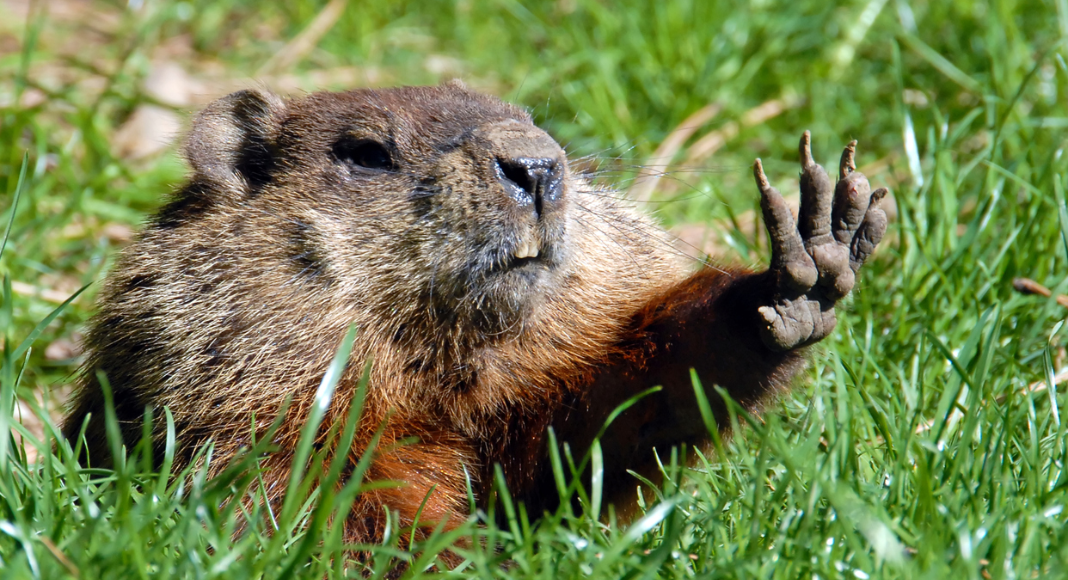 Groundhog Day isn’t everyone’s idea of an exciting holiday and often it’s forgotten by some, but in our house, we try to make this holiday special and fun. As a kid, I found it magical that a little rodent was believed to predict the weather. At the time, I thought I might pursue meteorology and I loved learning more about weather. In elementary school, it was always exciting to have a day that brought a fun topic of celebration and it feels nostalgic getting to share that childhood wonder with the kids. The teacher in me loves an opportunity to talk about holiday history and share some STEM activities that we can tie in for the day.
Groundhog Day isn’t everyone’s idea of an exciting holiday and often it’s forgotten by some, but in our house, we try to make this holiday special and fun. As a kid, I found it magical that a little rodent was believed to predict the weather. At the time, I thought I might pursue meteorology and I loved learning more about weather. In elementary school, it was always exciting to have a day that brought a fun topic of celebration and it feels nostalgic getting to share that childhood wonder with the kids. The teacher in me loves an opportunity to talk about holiday history and share some STEM activities that we can tie in for the day.
For movie lovers, Groundhog Day is a classic.
It premiered in 1993 and was a movie my family enjoyed watching around this time of year. I love the story line and the moral of unselfishly living each day to its fullest. Rita Hanson’s (Andie MacDowell) spunk and Phil Connors’ (Bill Murray) humor were lovable and charming; I even remember wishing I could have amazing hair like Andie! At some point when my kids are older, we may watch this film as a family and share a bit more of that 1990’s nostalgia. As with most media we grew up with, I realize now the movie contains a bit more adult content than I remember so we’ll wait until our audience is a bit more mature. For now, we love to find and print groundhog coloring pages and read groundhog-themed books.
There are many stories surrounding the history of Groundhog Day.
One of the most common traditions associated with Groundhog Day is Candlemas Day, when people would take their candles to church to be blessed for the remaining winter weeks. Candlemas Day folk songs began to incorporate an element of weather prediction to this tradition, and German and Irish folk traditions introduced the animal as the predictor (hedgehogs and badgers, respectively). The idea is that if the giant ground squirrel (groundhog) emerges from his burrow and then sees his shadow, he scurries back in leaving us with six more weeks of winter. If the groundhog doesn’t see his shadow, spring will arrive early. The Punxsutawney Groundhog Club was established in 1887 and hosts one of America’s most widely known Groundhog Day celebrations with their groundhog Punxsutawney Phil. Studies have been conducted to see if there is any correlation with Punxsutawney Phil’s behavior on February 2nd and the weather, but so far there have been no findings to show any real accuracy in the predictions we get from good ol’ Phil.
 This holiday really just comes down to a fun quirky way to spread some cheer when we are still experiencing winter blues after the holiday season is over.
This holiday really just comes down to a fun quirky way to spread some cheer when we are still experiencing winter blues after the holiday season is over.
It is also a holiday based in folklore and is in no way taken seriously by my family other than a fun tongue-and-cheek way to celebrate the possibility of continued winter or warmer weather. Some people are cautious in celebrating something that potentially has roots in pre-Christian festivals, but we truly see it as a silly and light-hearted American tradition much like other traditions that formed when our ancestors arrived in our great nation.
What are your thoughts about the holiday? I’ve read the groundhog weather prediction has some ties to Celtic tradition except that it was a weather-predicting badger. Having some Irish in my ancestry does make me wonder if that’s why I’m drawn to little celebrations such as Groundhog Day.
 The groundhog ceremony takes place in Punxsutawney, Pennsylvania every year, which explains why the groundhog is named Punxsutawney Phil. We try to watch the ceremony wherever we can find it televised and then do a fun weather-themed activity to go along with the day. Several other states have their own groundhogs or other weather-predicting animals. Staten Island Chuck in New York City famously bit mayor Bloomberg in 2009! Texas — in true Texas fashion — has Bee Cave Bob the armadillo to predict their weather. It’s all in good fun and a great little event to put a smile on our faces while we wait for spring.
The groundhog ceremony takes place in Punxsutawney, Pennsylvania every year, which explains why the groundhog is named Punxsutawney Phil. We try to watch the ceremony wherever we can find it televised and then do a fun weather-themed activity to go along with the day. Several other states have their own groundhogs or other weather-predicting animals. Staten Island Chuck in New York City famously bit mayor Bloomberg in 2009! Texas — in true Texas fashion — has Bee Cave Bob the armadillo to predict their weather. It’s all in good fun and a great little event to put a smile on our faces while we wait for spring.



















